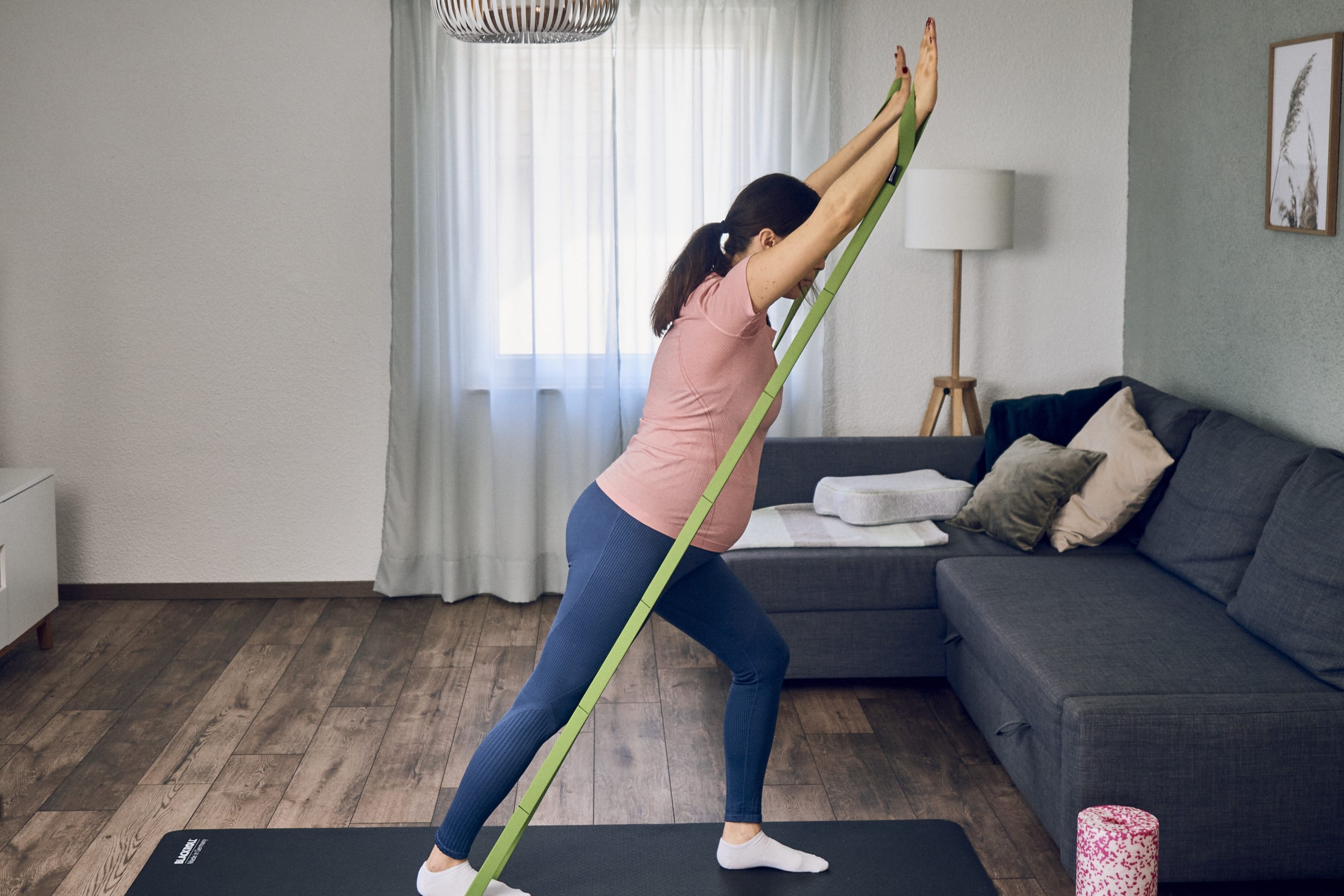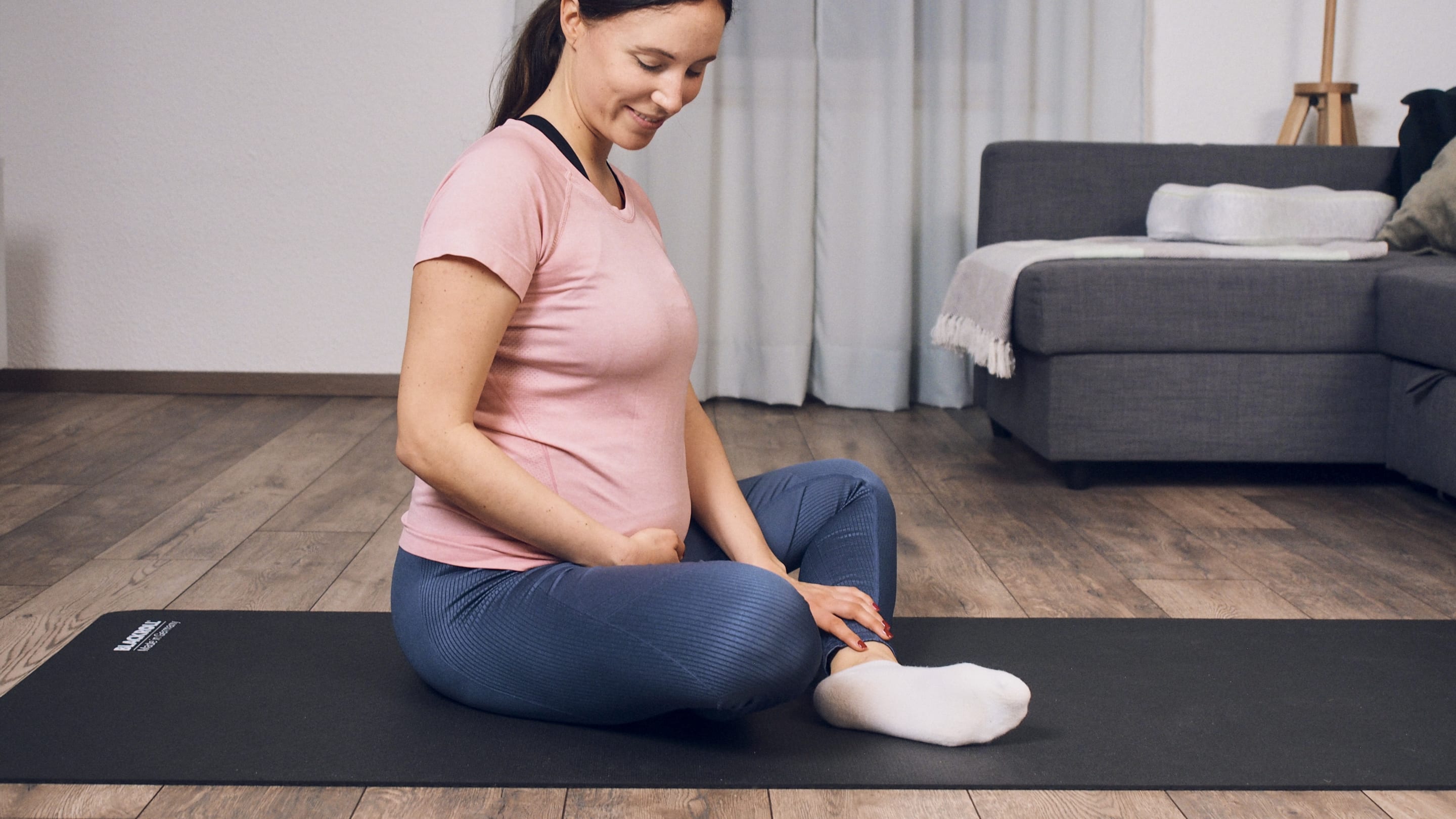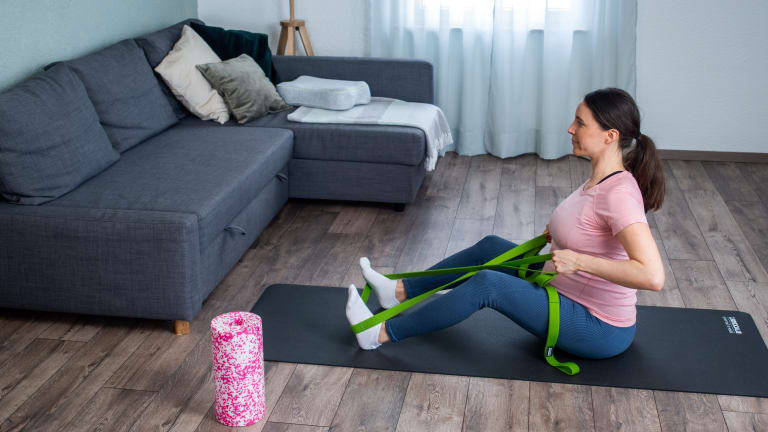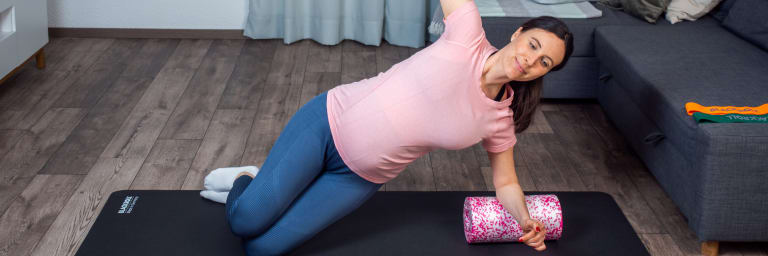
Sport during pregnancy

You should pay attention to this in order to stay fit throughout your pregnancy.
"Look after yourself and eat for two" - many tips previously considered to be words of wisdom are now considered outdated, and it's just as well. For many women, sport during pregnancy is an important consideration, and rightly so. However, a number of questions quickly crop up: Which exercises am I still able to do? How intensive should sport during pregnancy be, and which muscles should and can actually be trained? During pregnancy your body undergoes changes, and you must take this into consideration.
Here you can find out which physical changes occur on account of pregnancy, what effects this has on your body and, consequently, what you must bear in mind and focus on when practising sport.
01. Changes in your body during pregnancy
02. How to perfectly tailor your exercise to suit the physical changes experienced during pregnancy
- You should strengthen your posture muscles in order to avoid tension in your back and shoulders
- You should stop training the straight abdominal muscles, especially in the final three months of pregnancy, so that you don't exacerbate rectus diastasis (separation of the straight abdominals). However, there are exercises for the oblique abdominals that can be performed on your side or with your side supported, so as to provide your torso with vital stability.
- You can relieve your torse by means of the moderate training of the back, the lateral torso muscles, and the pelvic floor.
- The activation of your diaphragm should not be underestimated: it has a positive influence on the mobility of your torso, and promotes the backflow of the lymph and the blood.
03. You should bear this in mind during your pregnancy workout
No supine position in order to avoid circulation problems
Most women know that the supine position, as well as exercises performed in this position, can cause dangerous circulation problems during the last trimester of pregnancy.
The term "Vena Cava Syndrome" is used to refer to the situation whereby the child presses against the vena cava when the mother is in the supine position, thus impairing the backflow of the venous blood to the heart.
This can result in a sudden drop in blood pressure, or can even cause you to faint, or result in an insufficient supply of blood to your child. Because 30-40% of pregnant women suffer from such complaints, we recommend that you avoid training in the supine position, particualrly in the final trimester of pregnancy.
Don't overdo it, and train in the aerobic zone
As a result of the increase in volume of the blood plasma, the cardiovascular system is placed under much greater strain. To avoid causing an insufficient blood supply to the womb and the overexertion of the mother's cardiovascular system, it is advised that you train in the aerobic zone. If you can chat while training without any difficulty, then you are in the aerobic zone – you can use this as a rule of thumb.
Train your strength endurance and improve the oxygen content in your blood
Sport and movement increase the oxygen content in the blood, which then also reaches your child. Your pulse should not exceed 145 beats/per minute during training, and we recommend adjusting your training so that you train your strength endurance. Be guided by your pulse if you still fancy jogging while pregnant. By training the cardiovascular system you increase your oxygen supply by means of increased and deeper breathing. Your diaphragm is also trained and your torso mobility improves.
Train your pelvic floor and activate it when working out
Luckily, the concern that activating and training the pelvic floor muscles during pregnancy can trigger premature labour is no longer considered accurate.
On the contrary, a well-trained pelvic floor can be activated more easily, and also relaxed again. And both are very important during pregnancy and childbirth. The pressure on the pelvic organs and the pelvic floor increases on a continual basis during pregnancy. The pelvic floor should be capable of withstanding an additional load, for instance when laughing, sneezing, or coughing, without causing any involuntary release of urine, stool, or gas. For this reason we also advise that you perform moderate pelvic floor training during your pregnancy, in order that you can actively tense and relax these muscles.
04. Positive effects of sport during pregnancy
- Sport increases your sense of well-being
- Muscular imbalance and tension improves
- You train your strength endurance, as a result of which your body is supplied with more oxygen
- Movement increases the circulation and stimulates digestion
- You learn to tense and relax your pelvic floor, which is very important - particularly during childbirth
05. Conclusion Sport during pregnancy
Our conclusion with regard to sport during pregnancy is that exercise and the targeted activation of your muscles does more than keep you fit and mobile. Sport during pregnancy also increases your sense of well-being, your body is supplied with more oxygen, you prepare yourself for the upcoming childbirth and strengthen your core.
Moderate strength endurance training, adjusted based on your level of performance prior to the pregnancy, is highly recommended.







